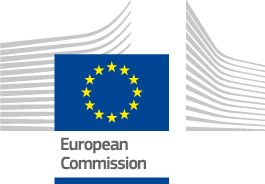Small towns and villages suffer from a widespread disease, and a keen-eyed observer will not need these statistics to recognize this. Lower rates of educational offers, fewer job opportunities, more difficulties accessing public and private services, and even accessing leisure and cultural activity: small cities often mean great decline.
By Clémence Maquet (Edited by Dinah Ahl)
For many small towns, the increase in the average age and the urban exodus of their population over the years have had a negative impact on their cultural, economic and civic dynamism. By 2050, the population of about four-fifths of European regions will be declining, according to Eurostat projections as of May 2021. And this is not a trend exclusive to EU countries. As the New York Times reported, small-town America has been struggling for years with declining population density, falling median income, and an accelerated aging of its population (in rural communities, the median age was 43 in 2018, 7 years older than in cities). The 50% of European towns and villages estimated to be in decline are therefore part of a more global picture.
The RegrowTown network, presented by various stakeholders from municipalities, governments, programs and companies at the European Week for Regions and Cities, aims to help small towns to break out from the decline pattern. It joins the older Eurotowns network, and had the city of Altena, Germany, as one of its "model cities". After a call for good practices launched by URBACT in 2017, Altena was selected to lead the transfer process along with Chemnitz, both in charge of transferring the knowledge and practices developed within the network, to other partners and cities.
At the very basic, the project thus simply seeks to empower citizens in small towns to address the structural problems of unemployment, citizen disengagement and population decline. In addition, RegrowTown has also taken on the mission of making government or European funding programs accessible to small towns, which are often far from the reality of the European Union. During this European Week of Regions and Cities, the annual regional and local barometer was also presented, revealing that a majority of local politicians do not agree that regions, cities and towns have enough involvement and influence on the future of the EU.
It was officially launched in May 2021 as part of a URBACT project funded by the European Regional Development Fund to link small towns across Europe to exchange initiatives, practices and policies to best revitalize a declining territory.
The result?
A network offering a real "toolbox" and gathering the experience of 8 municipalities of less than 50 000 inhabitants, in their research and actions to revitalize their town centers.
Among the best practices developed by the cities of RegrowTown, the Pop-up shops offer a great solution to use vacant retail premises. The city of Melgaço in Portugal, for example, which lost 45% of its population between 1960 and 2001, has now 3 people over 65 for everyone under 14, conducting a project of the most fruitful. The “pop-up project” seeks to revitalize the city center by making unused space available to residents who want to start their own business. There is no need to be afraid to start a business, as the program lends premises free of charge, with the agreement of the owners. There are a total of 15 projects, 11 of which are in loaned free buildings. 7 projects have already become permanent activities.
The example of Melgaço is just one illustration of the aspects that the RegrowTown network covers. In Manresa, Idrija, Igoumenitsa, Isernia, Aluksne, and Nyírbátor, other projects are taking place, bringing together, and reviving those city centers abandoned by the youth. Among other aspects of the network; the re-dimensioning and spatial distribution of infrastructure, the provision of services through collaboration between individuals and professionals, and the creation of opportunities to grow valuable elements of the social, physical and economic fiber of the small town. Of course, the results are still in progress, and many things could be improved. On the other hand, the network is still composed of a few cities, but initiatives are swarming, and there is no lack of ideas to help small cities get out of the downward spiral of decline, and make them attractive again.



